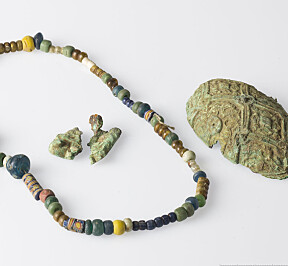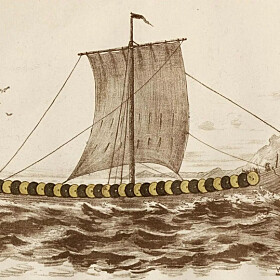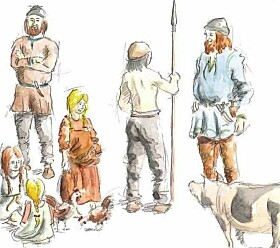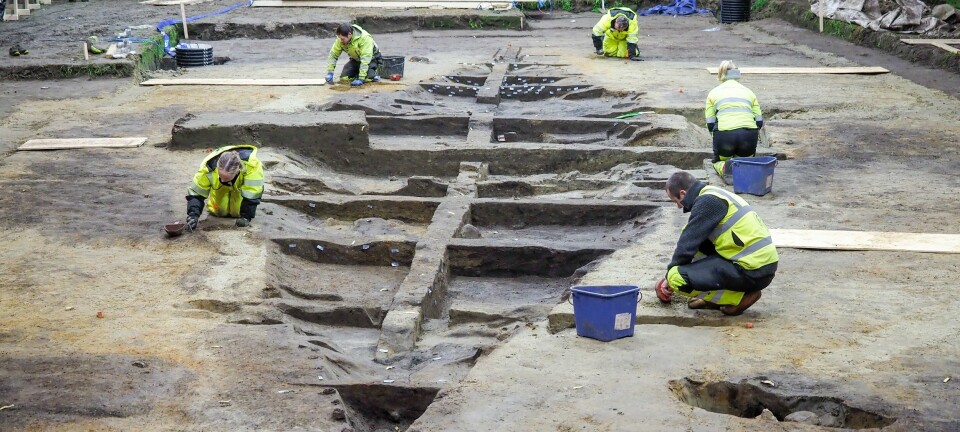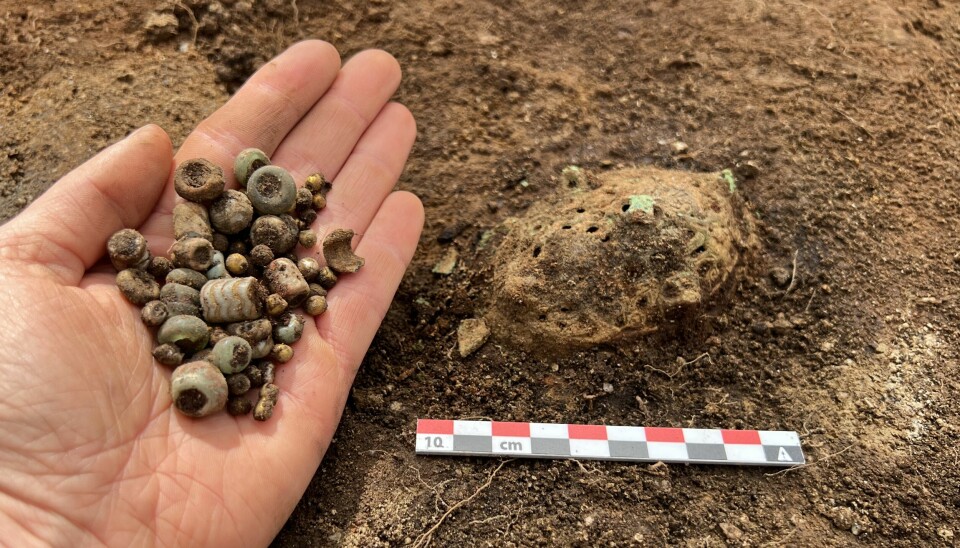
Here’s what the archaeologists found in the Viking grave the Heiland-family discovered in their garden
The sword that popped out of the earth in southern Norway may have revealed a double burial. After two days of intense excavations archaeologists have unearthed lots of jewellery, an axe and a shield. And perhaps a frying pan. And a pet rock.
Friday night a couple of weeks ago, Oddbjørn Holum Heiland found a Viking grave behind his house in Valle municipality in Setesdal in Southern Norway.
The building of an extension of the house was paused when Oddbjørn did exactly as you should in such a situation and called the county municipality.
On Thursday and Friday this week an excavation was carried out. The archaeologists were not expecting to find much. Holum Heilands own digging had revealed a sword from the Viking Age, a lance, pieces of brooches and gilded beads. Maybe they would find a few more of those beads. And perhaps some remnants of bones.
“But it turned out that Oddbjørn's excavator hadn’t even unearthed half of what was actually in this grave,” Jo-Simon Frøshaug Stokke from the Museum of Cultural History in Oslo says.
More weapons and heaps of jewellery
He’s in his car heading back to Oslo after two long and intense days of excavations.
Because they didn’t just find a few more beads.
They found an axe and a shield, and possibly some knives. Together with the lance and the sword this makes up a complete set of weapons for a warrior.
“This is perhaps the greatest find,” Stokke says.
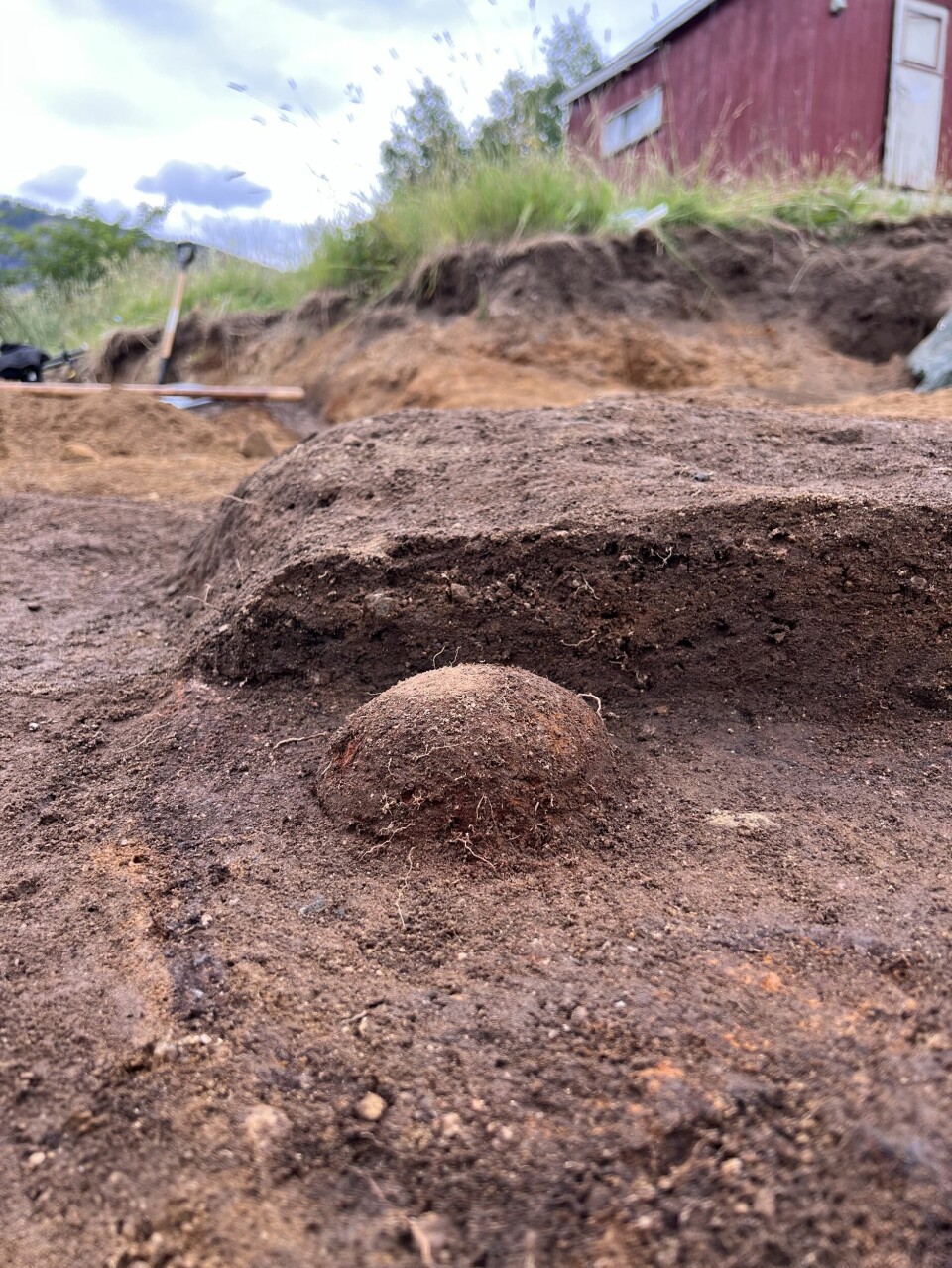
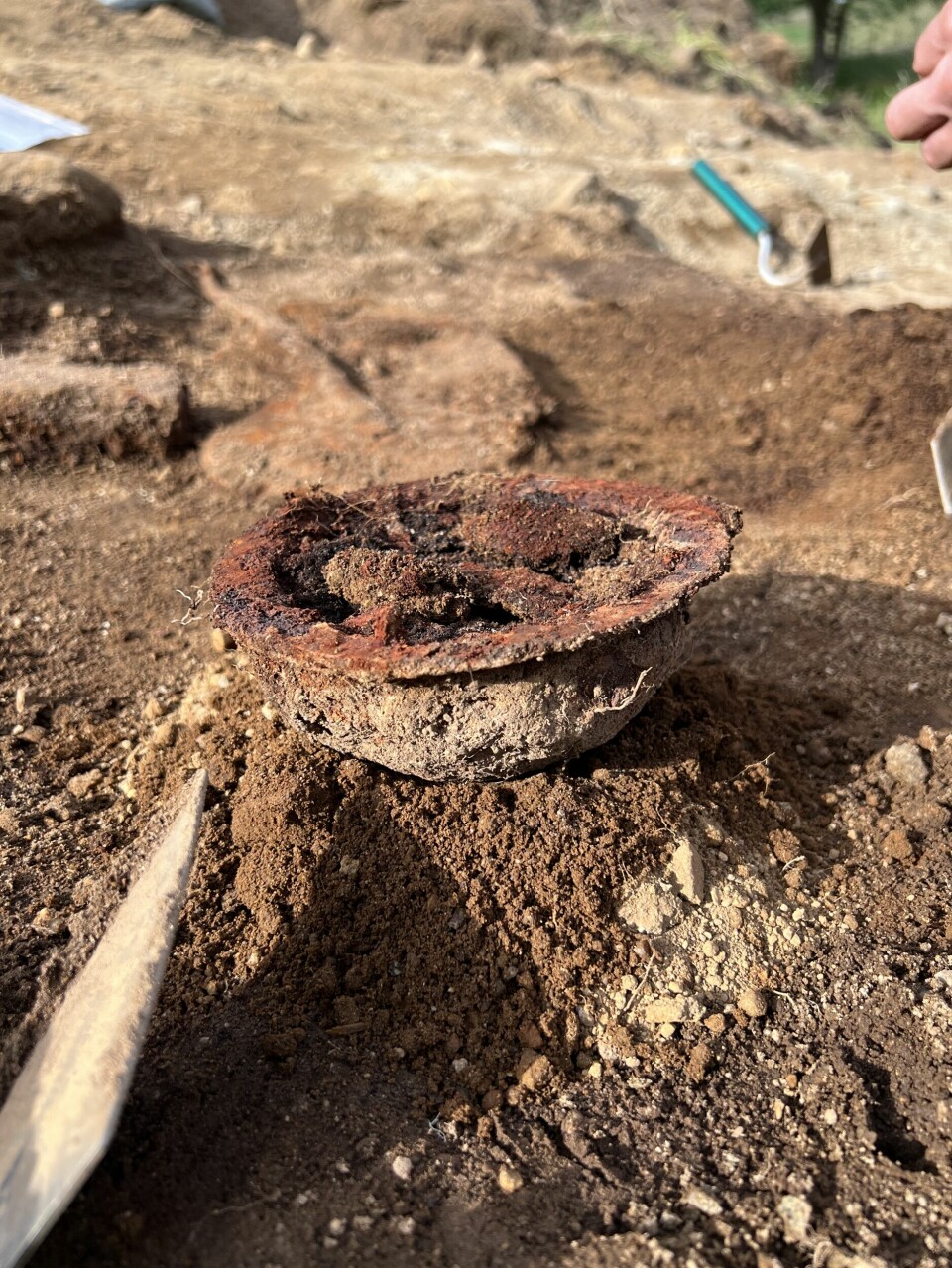
And then they found lots of jewellery. Perhaps as many as a hundred beads that have belonged to multiple necklaces, and lots of brooches.
“It was incredible to sit there and scrape away at the earth, and see more and more objects just appear. We kept it going until eight in the evening on the first day,” Stokke says.
“Oddbjørn's excavator had revealed fragments of oval brooches, but when we dug in we found lots more,” he says.
The grave contained several large oval brooches that would have been used to fasten dresses.
“We found as many as four of these, that is not common,” Stokke says.
“Men might have used these, but they are first and foremost associated with women during the Viking Age.”
Some of the jewellery was laid down in the grave in a wooden jewellery box.
“It was probably once quite elaborately adorned, but the wood has disintegrated. We could see the imprint of it, but it wasn’t possible to make out anything more,” Stokke says.
Jewellery boxes and chests filled with grave goods is known from the Viking Age. The Oseberg ship for instance had several. But it is a rare find, according to the archaeologist.
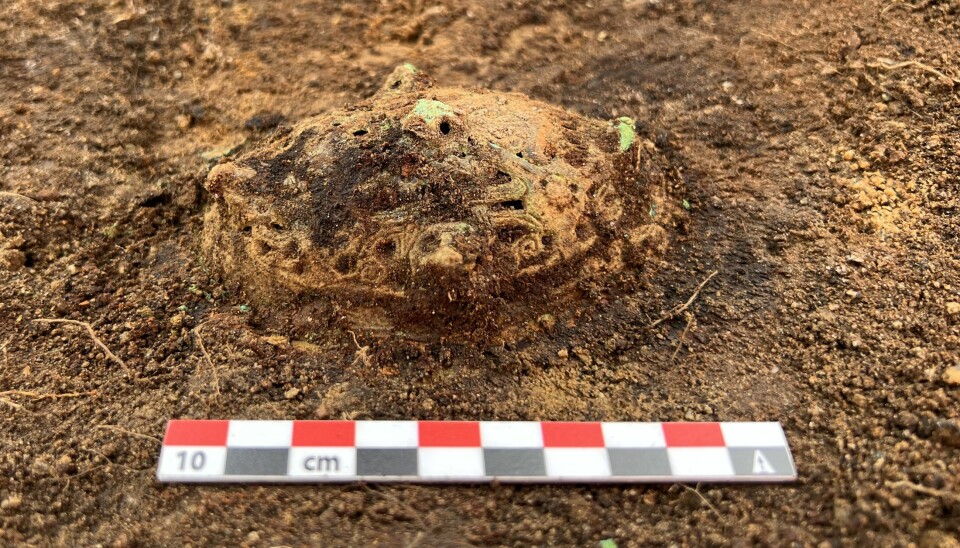

Not just one but two Vikings
So who was buried here?
We will never know for sure, as they didn’t find any bones.
But we may be talking about a double burial. This grave may have contained a man and a woman.
They may have been buried at the same time, or the grave might have been opened when the spouse died later on.
As the grave was opened by Oddbjørn Holum Heilands excavator, the archaeologists won’t be able to determine which it is.
“We’re not able to see if the grave was re-opened at a later time,” says Stokke.
“We have to study the contents of the grave and make interpretations based on this.”
Rich Vikings in the area buried in the exact same way
During the beginning of the excavation, the archaeologists thought that this is an unusually rich grave. But as they continued to reveal new artefacts, they started comparing their finds with other Viking graves found in the area previously.
“You don’t have to move further than to the neighbouring farm a couple of hundred metres away. Here they found some graves during the beginning of the 20th century that also contained weapons and jewellery,” Stokke says.
In total there are about 2-3 nearby graves from the Viking Age.
“And they are completely identical to the one we just excavated, the differences are minimal. They have the same type of sword, the same type of brooches, glass beads. It appears as if there is an identical set of grave goods put down here,” Stokke says.
The grave in the Heiland-family’s garden thus is part of a set of rich graves in Valle municipality in Setesdal.
“This is really interesting,” Stokke says.
“It means that we can start talking about bigger things than just saying that a rich person was buried here. It allows us to think beyond the individual artefacts, and to start understanding the structure of society – what these graves tell us about society in Valle during the Viking Age,” he says.
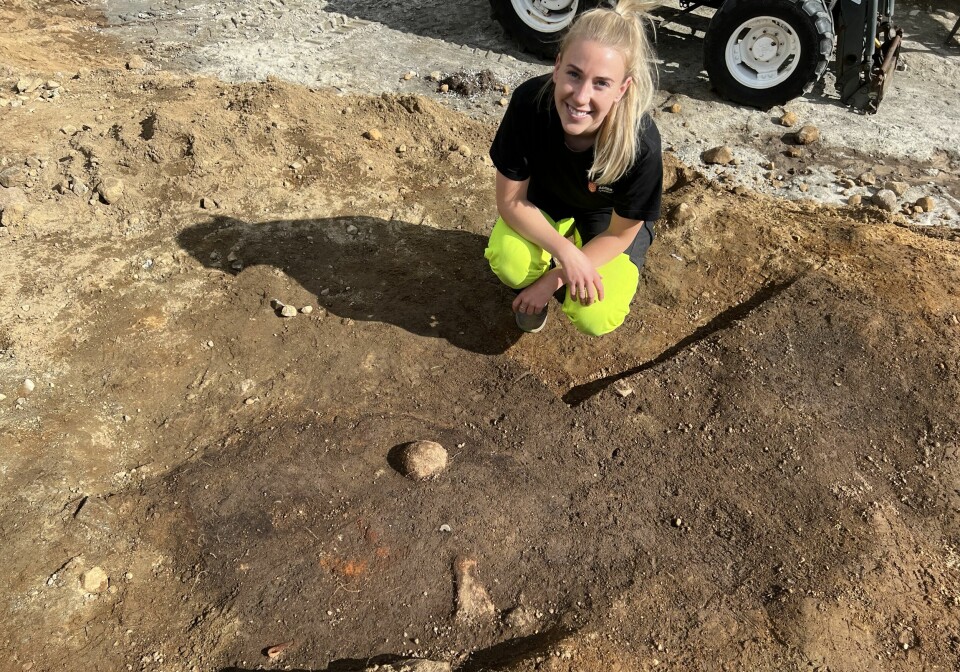
An iron aristocracy?
Some of the largest iron extraction sites from this time period are found a bit further north in the valley. Extracting iron was something the farmers could do during the wintertime, and iron was exported by the Vikings in massive quantities to Northern Europe and England.
“These exports were so huge that somebody must have gotten quite wealthy from it. And these finds make it tempting to connect the iron extraction business to Valle,” Stokke says.
“It’s a captivating thought to imagine such an aristocracy here in Valle, a group of people that have had a style and identity markers that have shown that they belong to this segment of society. Not simply that they are part of the upper echelons because they own swords and such, but that they actually make up a small aristocracy. They’ve dressed in similar ways and brought the same items with them in the grave.”
“We don't know what it was like when they were alive, but when the members of this aristocracy were buried, they clearly had to be buried in a very specific way,” Stokke says.
The grave is unusually rich, and it is a rarity to excavate such rich graves.
“Even so, the research on this will likely concentrate on the patterns in these finds rather than individual artefacts,” he says.
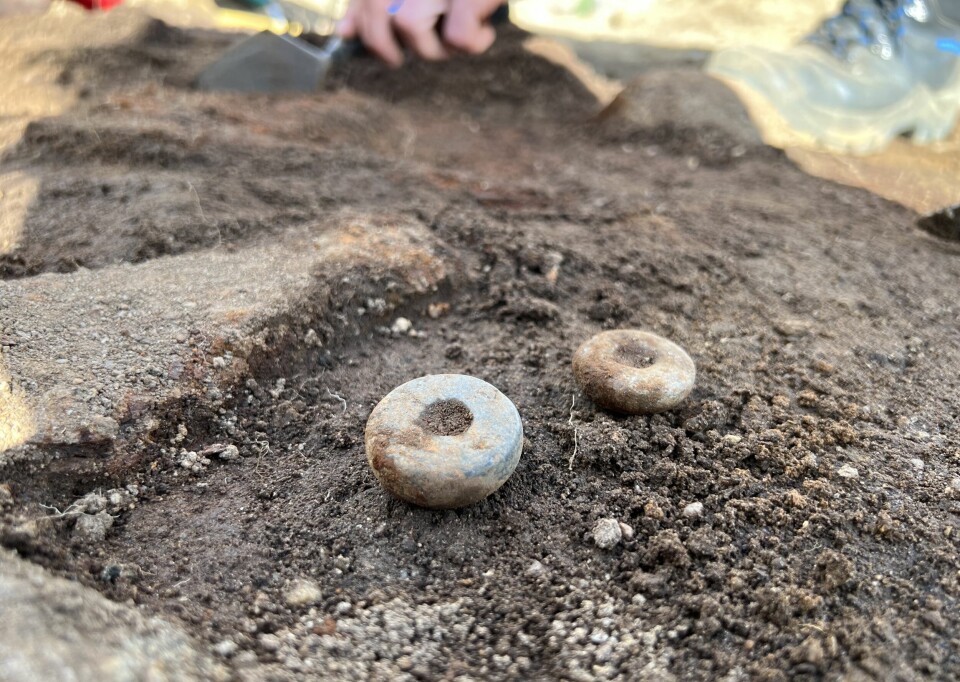
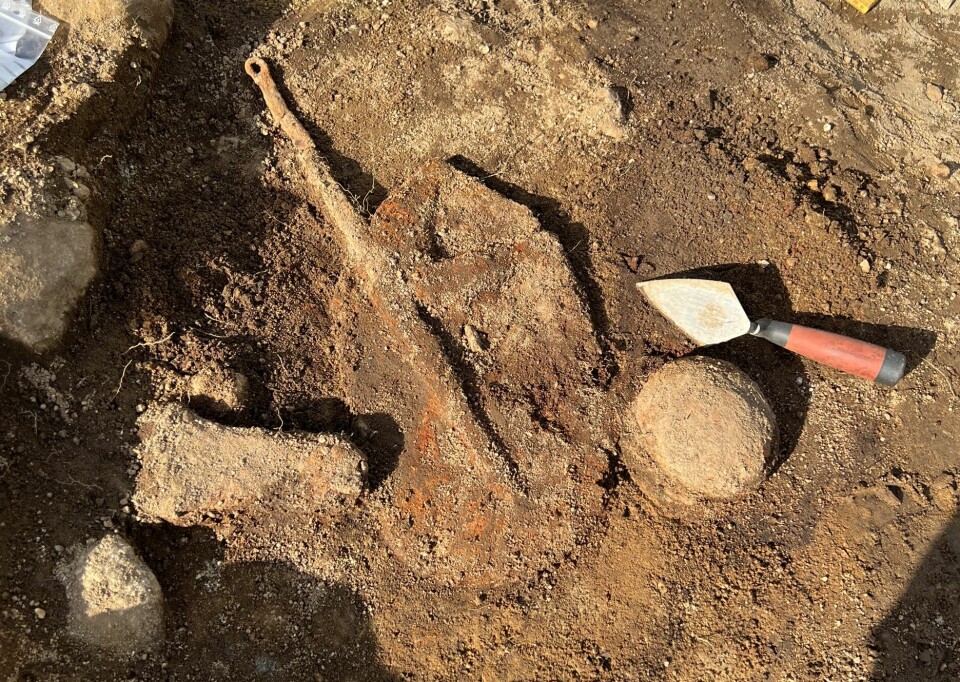
And they found even more stuff
They didn’t just find weapons and jewellery in the grave.
They also found a sickle. Valle has traditionally had good conditions for growing barley. This may have also been the case during the Viking Age.
Then there were two spindle whorls used to make thread.
And a pet rock.
“A pet rock is a round stone that doesn’t have any other function than that it is smooth and nice to hold in your hand,” Stokke says.
“They turn up in the oddest contexts, often in graves. This particular rock is round, about the size of a grape. It’s difficult to say whether somebody has made the round shape, most likely it’s just a naturally nice stone,” Stokke says.
And then they found something that might be a frying pan.
“This was the last thing we took out of the grave. It is not unique, but I haven’t encountered it before so I’m not sure how to interpret it,” he says.
The possible frying pan is possibly stuck together with other rusty items. X-rays and conservation will be able to say what it once was. Perhaps the handle of the frying is exactly that, a handle. Or perhaps it’s an iron ingot that could have been used as payment.
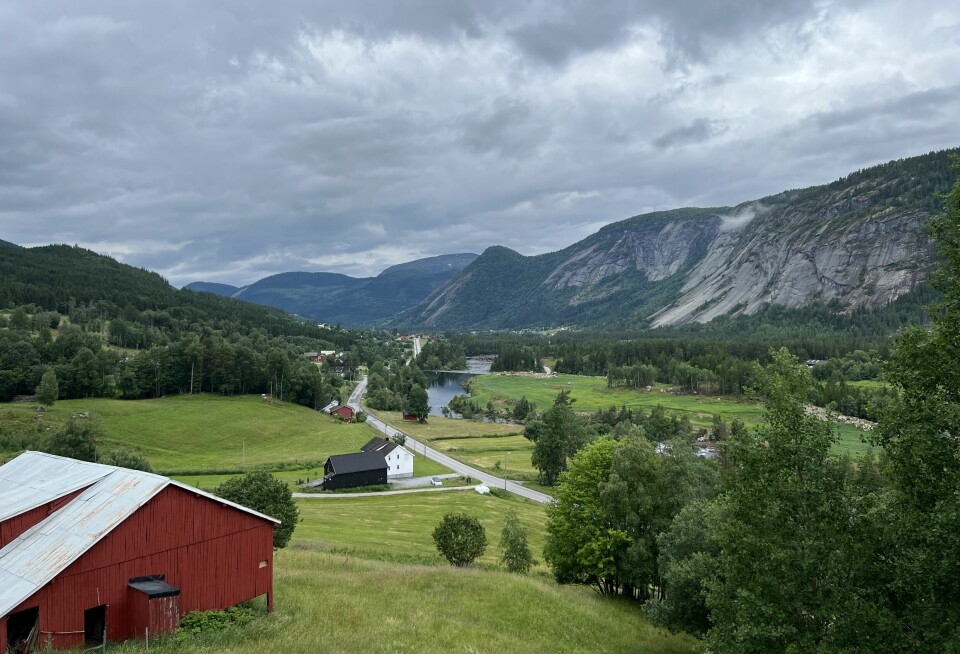
A funeral show
The two who were most likely buried here once upon a time, have seemingly been put in the grave with everything they might need in the afterlife.
But perhaps more importantly, they were put in the grave with the objects necessary to uphold the aristocracy for the still living.
“A burial of such an aristocracy during the Viking Age would have been a show for an audience,” Stokke says.
“This was not a private event, the entire village would have been present, as well as people from afar who had a relationship with the deceased. The items that were put in the grave would have been on display, to show off the wealth and status of the deceased. This show is put on by the descendants of the dead,” Stokke says.
After a hectic excavation, the riches that were once buried here have now been carefully wrapped and put in boxes, and are on their way to the Museum of Cultural History in Oslo.
------








